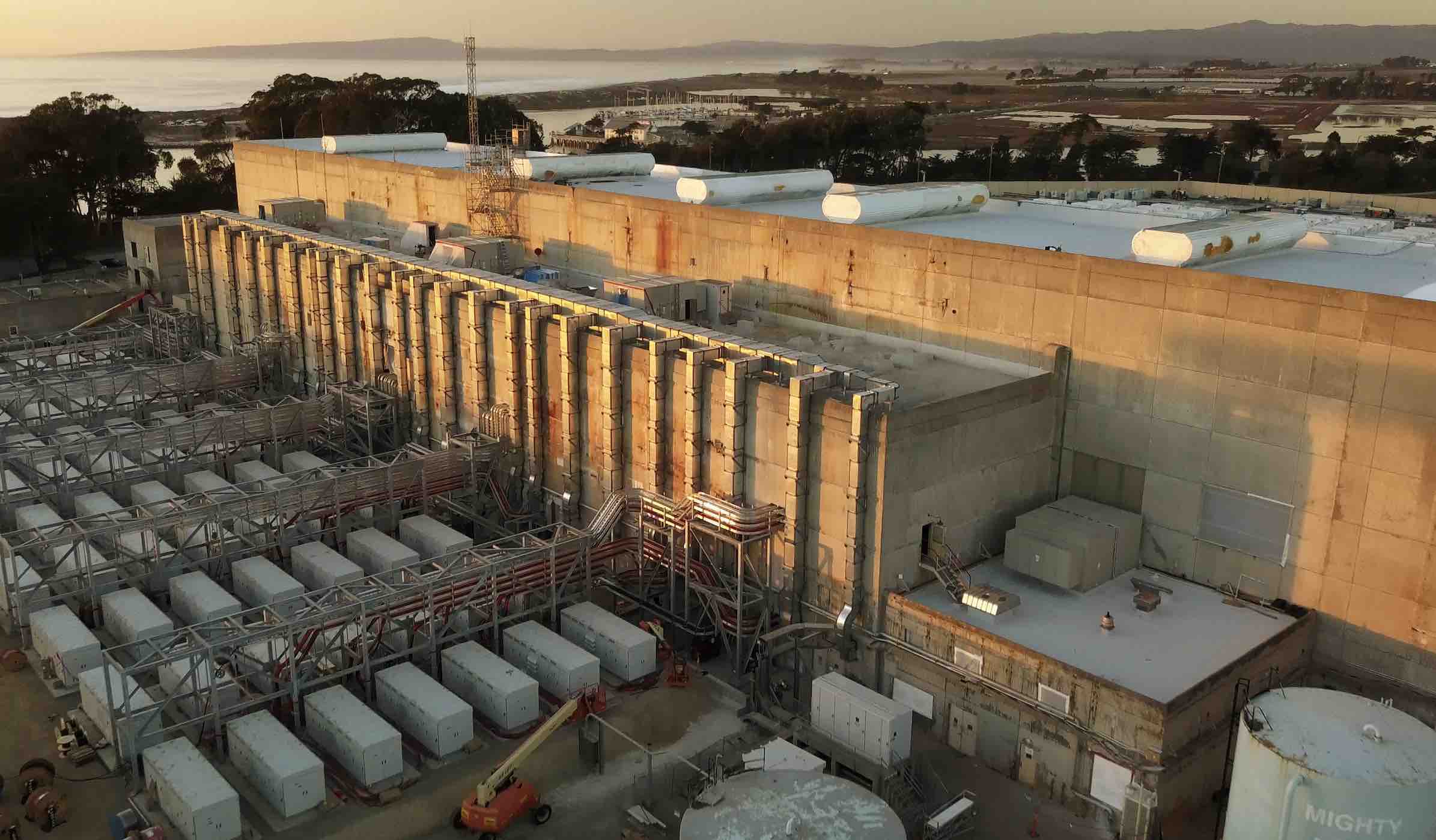The US company behind what is now the biggest battery storage system in the world says the facility could grow by nearly four times the size as the market for storage expands along with the increase in renewables in the California grid.
The energy company Vistra recently announced it had completed a 100MW expansion to the Moss Landing Energy Storage Facility, south of San Francisco, taking its total size to 400MW and 1,600MWh – the biggest in the world.
“What’s great about this particular site is that it has the space to support even further expansion – up to 1,500 MW/6,000 MWh,” Vistra CEO Curt Morgan said in a statement.
“California leads the country in the transition away from fossil fuels and the Moss Landing Energy Storage Facility stands as a model for how batteries can support intermittent renewables to help create a reliable grid of the future.”
The Moss Landing battery has a long term “resource adequacy” deal with Pacific Gas and Electric Company (PG&E).
“California produces an excess amount of renewable power during the day while the sun is up, but often struggles to meet demand as the sun goes down,” Morgan said.
“Our Moss Landing battery system helps to fill that reliability gap, storing the excess daytime power so it doesn’t go to waste and then releasing it to the grid when it’s needed most.”
The Moss Landing battery is notable for its four hours of energy storage, similar to many in the US market, but more than twice the storage duration of most of the big batteries built to date in Australia, which have mostly focused on delivering “grid services” rather than storing vast amounts of excess renewables.
That is expected to change as the balance of the grid tilts more towards renewables, and particularly solar, with rooftop solar alone expected to provide up to three quarters of total demand at various times of the day by 2025, according to the Australian Energy Market Operator.
Battery storage proposals in Australia are already being extended towards two hours of storage, while many others – such as the big batteries planned at the sites of major fossil fuel generators such as Yallourn, Loy yang A, Liddell and Torrens Island – looking at four hour storage after initial stages of shorter duration.
For instance, the 250MW Torrens Island battery being built by AGL in South Australia will start off as a single hour battery – focusing on grid services such as frequency response and short term arbitrate – before expanding to four hours storage over time.
Moss Landing took the title of world’s biggest battery from the Hornsdale Power Reserve in South Australia, which started off as a 100MW/129MWh facility before being expanded to 150MW/194MWh, but which is still focused on grid services such as frequency control, inertia and acting as a “virtual synchronous machine”.
Neoen, the owner of the Hornsdale Power Reserve, is currently building what will be the new biggest battery in Australia, the 300MW/450MWh Victoria Big Battery near Geelong, again with a focus on grid services, in this case allowing the market operator to expand the operator capacity of the main link between NSW and Victoria at peak times.
That battery was due to start commissioning now, before entering full commercial operation by December, but that start date now looks doubtful as investigations continue into the fire that destroyed two of the 212 battery storage containers to be installed at the site.
Vistra began construction of the second stage of the Moss Landing battery project in September 2020, and completed ahead of schedule in July. It uses LG lithium ion batteries and is co-located with the Moss Landing gas power plant in Monterey County.
Tesla is also building another big battery for PG&E at the Moss Landing site, a 182.5MW/730MWh battery storage system that will include 235 Tesla Megapack battery units.
Mark Rothleder, senior vice president and chief operating officer at the California Independent System Operator said the Moss Landing battery pointed the way to the future.
“This facility and others like it will show California and the world what lithium-ion battery storage can accomplish. It will help us keep the lights on this summer and summers to come.”
Note: Corrects earlier version over ownership of the Tesla battery installation at Moss Landing.








